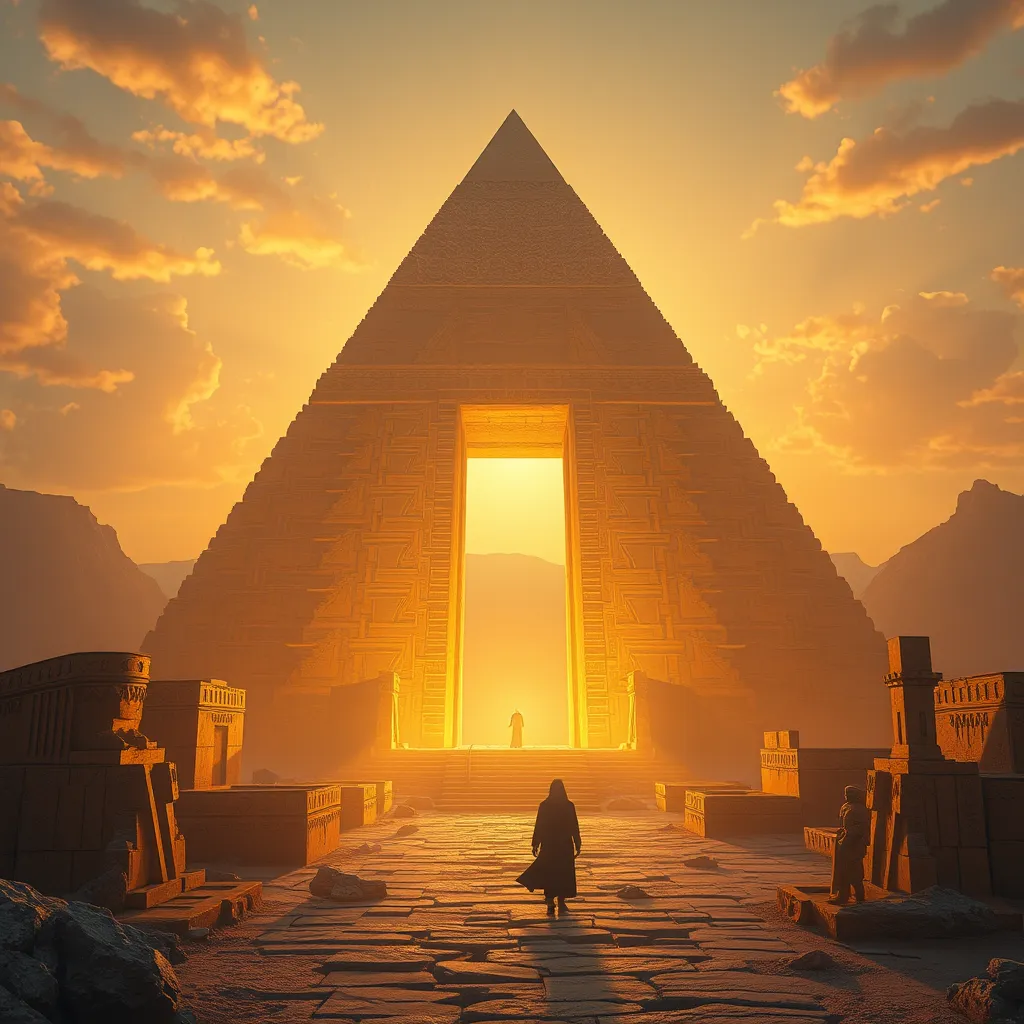The Duat: Beyond the Veil of Reality
I. Introduction to the Duat
The Duat, a fundamental concept in ancient Egyptian belief, represents the realm of the afterlife, a space beyond the material world where the souls of the deceased journey after death. It is a place of both danger and enlightenment, symbolizing the transition from life to the eternal existence that follows. Understanding the Duat is crucial to grasping the ancient Egyptians’ views on death, the afterlife, and the divine.
This article aims to explore the Duat’s significance, its historical context, geographical characteristics, the deities and creatures inhabiting it, the soul’s journey within it, its role in funerary practices, and its modern interpretations and influences.
II. Historical Context of the Duat
The origins of the Duat can be traced back to the early myths of ancient Egypt, where it was initially viewed as a shadowy underworld. Over centuries, the concept evolved, influenced by various dynasties and cultural shifts. By the New Kingdom, the Duat had become a complex system of realms and trials, reflecting a more sophisticated understanding of the afterlife.
- Origins in Ancient Egyptian Mythology: The Duat was first mentioned in pyramid texts, where it was depicted as a dark, mysterious landscape filled with gods and challenges.
- Evolution Through Different Dynasties: As dynasties rose and fell, the Duat’s interpretation shifted, with more emphasis placed on the judgment of the soul and the notion of eternal life.
- Key Texts and Artifacts: Important texts such as the Book of the Dead and various tomb inscriptions provide rich insights into the beliefs surrounding the Duat.
III. The Geography of the Duat
The Duat is often described as a vast and complex landscape, filled with both perilous regions and sanctuaries. The geography is symbolic, representing the trials one must face on the journey to the afterlife.
- Description of the Landscape: The Duat is portrayed as a dark realm with rivers of fire, desolate fields, and lush gardens, symbolizing the duality of life and death.
- Major Regions: Key areas include:
- The Field of Reeds: A paradise where the virtuous souls reside.
- The House of Night: A place of darkness where dangerous creatures lurk.
- The Hall of Two Truths: Where the heart is weighed against the feather of Ma’at.
- The Role of the Nile River: The Nile is often depicted as a vital element in the Duat, symbolizing the flow of life and the journey of the soul through the afterlife.
IV. Deities and Creatures of the Duat
The Duat is populated by numerous gods and mythical beings, each playing a significant role in the afterlife journey.
- Key Gods and Goddesses:
- Osiris: The god of the afterlife, overseeing the judgment of souls.
- Isis: The protective goddess who aids the deceased in their journey.
- Anubis: The god of mummification and the protector of graves.
- Mythical Creatures:
- Ammit: A fearsome creature that devours the hearts of the wicked.
- Serpopard: A creature symbolizing the duality of life and the challenges faced in the Duat.
- The Role of Beings: These deities and creatures guide, challenge, and judge the souls, influencing their fate in the afterlife.
V. The Journey Through the Duat
The journey through the Duat is a central theme in ancient Egyptian beliefs about the afterlife. It begins at the moment of death and involves several stages and challenges.
- The Process of Death: Upon death, the soul departs from the body and begins its journey through the Duat.
- Major Trials: The soul faces various trials, including:
- Crossing treacherous rivers.
- Encounters with hostile beings.
- Overcoming personal fears and regrets.
- The Weighing of the Heart: This critical ceremony determines the soul’s fate, where the heart is weighed against the feather of Ma’at. A heart lighter than the feather signifies a virtuous life, allowing the soul to enter the Field of Reeds.
VI. The Duat in Funerary Practices
The Duat plays a vital role in ancient Egyptian funerary practices, influencing burial rituals and the preparation of the deceased for the afterlife.
- The Role in Burial Rituals: Funerary rites often included rituals to ensure safe passage through the Duat.
- Funerary Texts: Texts such as the Book of the Dead provided instructions and spells to assist the deceased on their journey.
- Artifacts and Tomb Illustrations: Tombs were adorned with illustrations depicting the Duat, including scenes of the Weighing of the Heart and the soul’s journey, meant to guide and protect the deceased.
VII. Modern Interpretations and Influences
The concept of the Duat continues to resonate today, influencing modern spirituality, art, and literature.
- Impact on Contemporary Spirituality: Many modern spiritual movements draw inspiration from ancient Egyptian beliefs, including the idea of an afterlife and the soul’s journey.
- Representations in Literature and Art: The Duat has been depicted in various forms of media, including:
- Novels exploring themes of life after death.
- Artworks inspired by ancient Egyptian mythology.
- Films that reinterpret ancient Egyptian stories.
- Comparisons with Other Beliefs: The Duat is often compared to other cultural beliefs about the afterlife, highlighting similarities and differences in the understanding of death and the journey beyond.
VIII. Conclusion
The Duat holds immense significance both in ancient Egyptian spirituality and modern interpretations of the afterlife. It represents a complex interplay of belief, mythology, and morality, illustrating the ancient Egyptians’ deep understanding of life and death.
Reflecting on the enduring legacy of the Duat, we see how it continues to inspire curiosity and exploration of ancient Egyptian spirituality. As we delve into these ancient beliefs, we invite further exploration of the rich tapestry of mythology and philosophy surrounding the afterlife.




